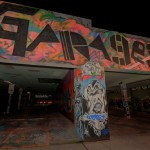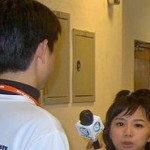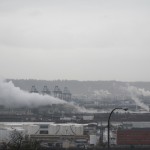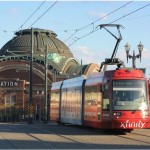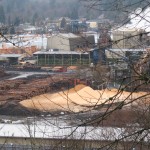Introduction
This unit focuses on and develops the idea that math is around us in our everyday lives. It takes problems that people encounter relating to their work, business, education or home lives and structures them to be solvable using various levels of mathematics. The unit described below focuses on using high school mathematics but it could be adapted to use other grade levels. As the name suggests the unit is supposed to be followed as an investigation for students to deconstruct a problem or series of problems then use mathematics to help solve or propose possible solutions to the problems investigated. The kinds of problems that students will investigate will be problems that impact their local working community similar to those problems investigated by the Messy Problems workshop and Mason Matters. As the Common Core State Standards are being implemented this unit is structured to utilize not only their content standards but the process standards of mathematics as well. Due to the complexity of this unit and the multiple parts to completing the investigation successfully the suggested assessment is a collection of work. I envision this as a portfolio for students to develop as the progress through the investigation with some pre-determined standards referenced rubrics as well as some student generated rubrics centered around the process for the investigation.
To complete the ideas laid out for this unit you will need:
- The outline for the unit (below) will give you the overall design and concept for the unit.
- The activity types for mathematics: this will help shape and determine what technologies you are able to use in educative ways in the unit can be found onpage 2 linked below.
- Information on a variety of technological tools to aid in the investigation. In this case I will be focused on Virtual Manipulatives. This is useful since students will be modeling their problems and using their models to develop their understanding(click here if want to know more about how virtual manipulatives are important for this unit)
- the outline for the assessment task can be found on page 3 linked below.
- some final considerations when thinking about implementing this unit can be found on page 4 linked below.
“Problematizing OUR Messy Problems”
Unit Goals:
- create connections between the core concepts of mathematics and the community at large
- allow students to explore the communities connection to math
- allow student to explore some of the ways math interacts with technology
- Students will be able to create problems appropriate of various levels by researching or problematizing things from their lives. (make sense of problems SMP 1 pt 1, Reason Abstractly and Quantitatively SMP 2 , Modeling with Math SMP 4)
- In creating these problems students may use any or all of the following component standards for Mathematical Content(building / interpreting functions, creating equations/inequalities, seeing structure in eq’s, use systems of equations, use geometric Rules, use statistical rules)
- Students will solve created problems or modify created problems to be solvable at various stages of mathematical development (persevere in problem solving SMP 1 pt 2)
- Students will Critique problems in multiple ways (SMP 3 Construct argument and Critique) including written and oral, both on their own problems and on each others
- Students will learn to use tools to make problems and solve them. (Use appropriate tools and Modeling SMP 4, 5)
- Students will develop a deeper number sense with connections to Real numbers and use that sense to solve problems (possible connections to vectors)
Some questions to provoke thinking might include:
- What are some of the math problems that you encounter every day.
- What are some things we encounter every day that we never think of as math but have mathematical components
- How do we use math to create/simplify/solve real world problems.
- How do we take our everyday experiences and turn them into mathematical models, ideas, arguments
By the end of the unit students should understand:
- Math is Everywhere
- Everything can be modeled by math to some degree (how precise is the question)[possible misunderstandings on both parts]
- Everyday tasks include more math than people realize (even the fun ones, such as computer games, walking, driving, sports.)[misconception that people don’t do math all the time]
- Determining if a formula is a function uses the vertical line test to see if there are two outputs for a given input [horizontal line test or similar transposition]
- Building equations and functions uses all of arithmetic (+,-,*,/) as well as using exponents, bases, logarithms, trigonometric functions, and composition (taking a function of a function)
- Make connections between different function types and the problems they can represent (trig functions representing periodic movement, exponential for growth of population or radioactive decay) [their is no function that matches what I want to do(model)
By the end of this unit students should be able to:
- Identify Functions using Vertical line test
- Build a function from known functions.
- Define and calculate Best fit functions (line function)
- describe the process for creating an inverse function and find inverse functions
- compare linear, exponential, quadratic, (trigonometric) functions
- Define Domain, Range and Function.
- Define and calculate average Rate of Change
- Make connections between observations and mathematical functions/models
- adjust a model to better fit an observation
- solve/compute possible solutions working forwards or backwards
- Follow steps of modeling mathematical ideas (pg 72 of CCSS flow chart for problem solving)
- Make a verbal presentation to communicate their mathematical ideas
- Complete an in Class Critique of mathematical ideas and problems
- Use some kind of virtual manipulative or simulation to model their functions digitally
- Create a portfolio that will include a set of 6 problems to present to their class/community to show their ability to develop mathematical functions and models of at least 3 real life occurrences from their local community.
- Create Multiple Representations of Functions (Graph, table, formula)
The activity types for mathematics that help shape the use of technology for this unit can be found on page 2 linked below.
The outline for the assessment task can be found on page3 linked below
Some final considerations when thinking about implementing this unit can be found on page 4 linked below.
Click here if want to know more about how virtual manipulatives are important for this unit



